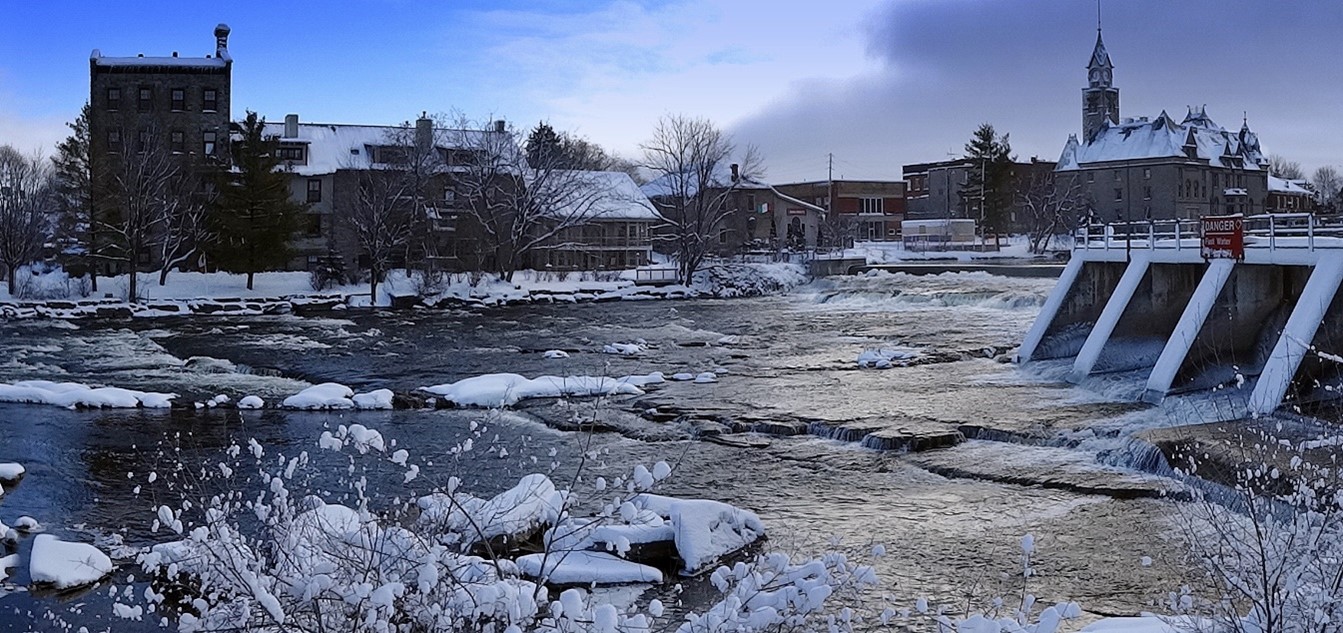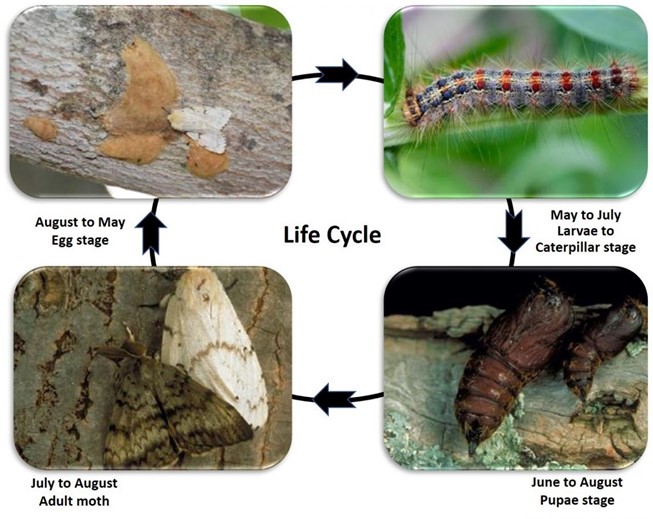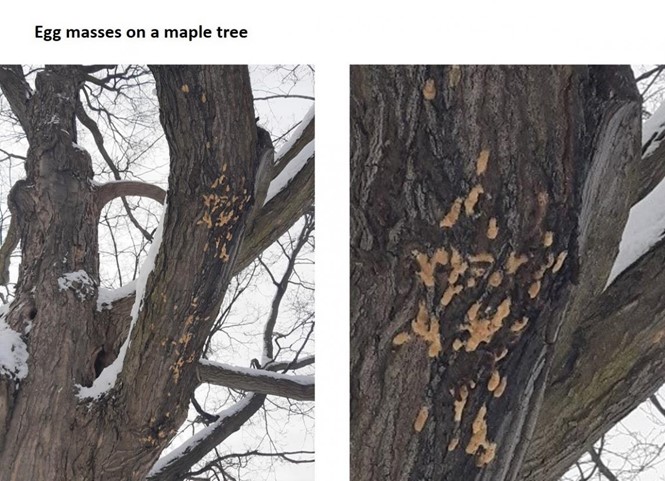Urban Forest-River Corridor Committee
The Urban forest/River Corridor Committee is a committee of Town Council made up of volunteers and one member of Council. We meet monthly and our meetings are open to the public.
What we do
The Committee communicates with Town Council/staff on issues regarding the protection and enhancement of urban of trees through conservation, planting and maintenance as well as issues which impact the water quality of the Mississippi River.
One of the responsibilities of the UF/RCC is to work with Town Council to educate residents, developers and staff on the importance and value of urban trees and the river corridor. Also, the committee reviews and comments upon residential, commercial and industrial developments to evaluate their environmental impact and ensure that right tree is planted in the right place.
Programs
Residential Tree Planting Program:
Since 1998 the Town has made trees available to residents for residential planting. Each spring residents are able to register a request for a tree, select a tree from a list of available species and attend a tree planting workshop.
Bare Root Tree Planting Presentation
PDF of 2024 PowerPoint Presentation
Commemorative Trees Program:
Residents wishing to commemorate specific people, events or occasions may have a tree planted through the Commemorative Tree Program.
Through this program, the Town will assist families or groups who wish to have a bench installed, or a tree planted, in a Town location (park or street side) in remembrance or commemoration of the loss of an individual or in celebration of an anniversary.
The Benefits of Trees
Trees are one of nature’s most powerful energy savers and water purifiers! Urban forests have substantial benefits to the municipalities (storm water attenuation, air quality mitigation, tourism, health care costs, etc.), to residents (property value, energy conservation, etc.) and business (tree care companies, nursery industry, aesthetics of retail areas).
Below are some quick facts on the benefits of trees
1. Trees improve health:
- Trees make the air more breathable by reducing particulate matter Foliage helps to settle out, trap and hold particulate pollutants (dust, ash, pollen and smoke) that can damage human lungs.
- One large tree can provide a day’s oxygen for up to four people.
- Trees absorb carbon dioxide and other dangerous gases and, in turn, replenish the atmosphere with oxygen.
- Trees improve moods and emotions, and they create feelings of relaxation and well-being.
- Trees provide privacy and a sense of security.
- trees can act as buffers, absorbing a significant amount of urban noise.
2. Trees save energy:
Deciduous trees provide shade and block heat from the sun during hotter months. By dropping their leaves in the fall they let the sunlight shine through in the colder months.
- Shade trees can reduce air conditioning costs. Carefully positioned trees can save 25 to 30 percent of energy consumption
- Shade from trees over hard surfaces such as driveways, patios and sidewalks minimize landscape heat load.
- Evergreens planted on the north sides of buildings can intercept and slow winter winds.
3. Trees add natural character to our cities and towns:
- Provide us with colours, flowers, and beautiful shapes, forms and textures.
- Trees add interest by changing with the seasons.
- Trees and associated plants create habitat and food for birds and animals.
4. Trees increase property values
- Healthy trees can add up to 20 per cent to residential property values
5. Trees reduce pollution
6. Trees conserve water and prevent soil erosion
- Trees reduce surface runoff from storm water, and prevent soil erosion and sedimentation of streams.
- Trees may reduce the effects of flooding
- Trees increase ground water recharge to help make up for losses in paved areas.
- Trees prevent wind from eroding soil.
7. Trees increase economic stability
- Trees enhance community economic stability by attracting businesses and tourists.
River Corridor

The Mississippi River is a tributary of the Ottawa River in Eastern Ontario. It is over 200 kilometres in length from its headwaters at Mazinaw Lake to the Ottawa River and has a drainage area of 4,450 square kilometres. The River flows through a number of communities, including Carleton Place.
The Urban Forest and River Corridor (UFRC) Advisory Committee to the Town of Carleton Place provides advice and guidance to the Town on the following matters related to the River Corridor:
- Ensuring that the historical development patterns and natural heritage resources do not negatively impact on the River and/or the Town’s drinking water.
- Participating in reviewing and communicating with the Town Council/Staff on proposed development and maintenance which will affect the River Corridor and wetlands within the Town of Carleton Place to ensure the protection of the River, water quality, fish habitat and recreational uses.
- Reviewing projects to be undertaken by Town Staff within the River Corridor.
- Working with Town Council to educate residents, developers and Staff on appropriate environmental procedures to be undertaken to protect the integrity of the River Corridor.
- Working with Town Council and Staff on the implementation of The Source Water Protection Plan and providing recommendations to protect the Town’s drinking water.
- Providing advice on Town policies, including, but not limited to the Official Plan, Development Permits, bylaws and guidelines which affect the River Corridor.

Spongy Moth and the Summer of 2021
Local Status
An invasive forest defoliating insect found in Ontario that is now naturalized. Recent observations in Carleton Place indicate its populations are increasing. Few egg masses were found in the fall of 2020 so what we have is a large population of blow ins with the winds we have been having. The Urban Forest Advisory Committee has observed every oak (Quercus) in Town has holes in the leaves and caterpillars. Also they observed the same on sugar maple (Acer saccharum), and basswoods (Tilia americana). The outbreak is expected to last two to three years.
Characteristics and Life Cycle
 The European Spongy moth is an invasive insect native to Europe. It is currently established in much of eastern Canada. The caterpillar stage of this insect feeds on the leaves and foliage of a large number of hardwood and softwood trees and can feed on over 300 plant species including landscape and garden plants.
The European Spongy moth is an invasive insect native to Europe. It is currently established in much of eastern Canada. The caterpillar stage of this insect feeds on the leaves and foliage of a large number of hardwood and softwood trees and can feed on over 300 plant species including landscape and garden plants.
Oak (Quercus) is the preferred species of the Spongy moth with other hosts ranging from birch (Betula) and aspen (Populus), to various hardwoods such as sugar maple (Acer saccharum), American beech (Fagus grandifolia) and softwoods such as eastern white pine (Pinus strobus) and Colorado blue spruce (Picea pungens).
The Spongy moth:
- Overwinters in the egg stage often on the bark of trees.
- In spring, eggs hatch and larvae ascend the trees to feed on the new foliage.
- Feeding occurs during the day, but as the caterpillars mature feeding occurs mainly at night — often this can delay the detection of infestations.
- Mature larvae are 50 mm long, dark coloured, hairy, with a double row of five pairs of blue spots, followed by a double row of six pairs of red spots, down the back.
- Feeding is completed in July-August.
Male moths are light brown and slender-bodied, while females are white and heavy-bodied.

Tree impacts (signs/symptoms)
- Spongy moth outbreaks can occur every seven to ten years.
- Larvae chew holes in leaves or devour entire leaves.
- In late July, spongy egg masses can be observed on the trunks and branches of infected trees and on items such as outdoor equipment, trailers and vehicles.
- During severe outbreaks, trees and shrubs are completely defoliated over large areas; despite the trees’ ability to produce a new crop of leaves over the summer, the damage causes significant growth loss.
- Understory shrubs and plants may also be affected.

Tree impacts (signs/symptoms)
Carleton Place, through the Forest Health Network, is communicating with other partners such as the Ontario Ministry of Natural Resources and Forestry that are monitoring the issue with increased populations of this insect in other areas of the province. The Town’s Urban Forest Advisory Committee, along with staff, continue to monitor this issue and will communicate to residents about spongy moth status in Town and about best practices residents can consider for control.
What might residents notice?
Residents may see large groups of caterpillars on tree trunks and branches and some loss of leaves (defoliation) on trees this spring as a result of this insect. Healthy trees are able to sustain loss of leaves and some trees will produce a second flush of leaves in the same season following leaf loss. It is only repeated years of caterpillar feeding that cause concern with tree health.
What residents can do?
On their properties, residents can consider the following to reduce tree damage:
- During spring and summer, inspect outdoor equipment, trailers, vehicles and firewood on a regular basis for egg masses and caterpillars.
- In spring, remove egg masses or larvae by scraping. Then destroy them immediately by crushing the eggs or by submerging the eggs into a bucket filled with water and household bleach or soap for at least two days. After two days, discard the solution and egg mixture.
- Between May and early June, Btk (Bacillus thuringiensis kurstaki) can be purchased at a local hardware store and applied. Always consult with knowledgeable professionals about pesticide use.
- In June and July, burlap can be attached to the trunk of trees using a string in a band around the trunk and folded in half. Often caterpillars will congregate in the burlap and this can be disposed of daily in compost etc. Caution: the caterpillars have long hairs that can cause skin irritation, so it is recommended to wear gloves.
- Wrap burlap around the trunk of your tree
For quick tips on insect removal or more information about this insect and where the above information was obtained, please visit the following links:
- Spongy Moth Fact Sheet
- https://www.ontario.ca/page/gypsy-moth(link is external)
- https://www.invasivespeciescentre.ca/invasive-species/meet-the-species/invasive-insects/gypsy-moth/(link is external)
The Eastern Ontario Model Forest, the Invasive Species Centre and the Early Detection & Rapid Response Network Ontario have partnered to prepare an Information Sheet on what to expect in 2021, and tips on what homeowners and woodlot managers can do to address egg masses.
